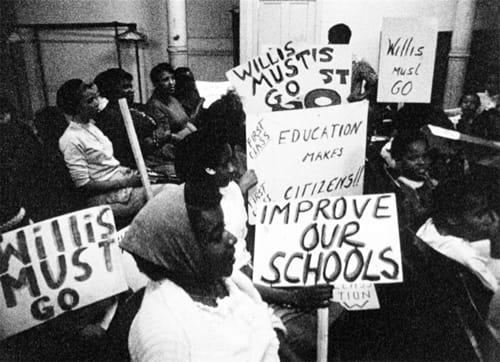Dizzy Gillespie (pictured) was a pioneering jazz trumpeter, composer, and band leader responsible for ushering in a new style of jazz with fellow legend Charlie Parker known as “bebop.” The late Gillespie was born on this day in 1917.
SEE ALSO: The Siddi People: The African Population of India, Pakistan
Gillespie was born John Birks Gillespie in the small town of Cheraw in South Carolina. Gillespie was the youngest of nine children born to his parents, and his father was a musician and band leader. Gillespie and his siblings were all adept at playing music, and he flourished at teaching himself the trombone and the trumpet by the time he was 12.
Listen to Gillespie’s “Groovin High” here:
After securing a musical scholarship to a prep school in North Carolina, the Gillespie family, which lost its patriarch, moved to Philadelphia. At 18 years of age, Gillespie would enter the world of professional playing when he joined the Frankie Fairfax Orchestra. Moving to New York City, he worked alongside Teddy Hill and Edger Hayes in the 1930s, replacing his idol and fellow trumpeter Roy Eldridge in 1937.
In 1939, Gillespie joined famed band leader Cab Calloway‘s band and began his official recording composition and recording career. Until 1944, Gillespie’s work was featured in a number of popular swing bands and he worked with a series of jazz greats. Those people included vocalist Ella Fitzgerald, Jimmy Dorsey, and saxophonist Charlie “Bird” Parker. Along with Parker, Gillespie developed the “bebop” genre, causing a new sound to be born, and helped define the modern jazz styles of today.
Listen to Dizzy Gillespie’s “Salt Peanuts” here:
Gillespie was a distinctive looking man with cheeks that ballooned to an almost comical level when he played. In 1953, someone sat on his trumpet, which gave it an unusual tilt. Instead of getting it fixed, Gillespie realized that the sound coming from the instrument improved, so he fashioned his future instruments in the same way.
Listen to Dizzy Gillespie’s “A Night in Tunisia” here:
It was also around this time that Gillespie’s band began to find its own sound, and he was among the first jazz players to use Afro-Cuban and Caribbean styles in his music.
In his career, Gillespie recorded more than 60 albums as a band leader and dozens more as a collaborator with names such as Charles Mingus, Quincy Jones, and several others.
In Gillespie’s later years, he toured extensively and appeared on Stevie Wonder‘s 1982 hit “Do I Do” and his easy-going nature lent itself well to TV appearances on several shows, including the children’s program “Sesame Street” (pictured).
A follower of the Bahá’í Faith, Gillespie transformed his life in 1970 when he found the spiritual practice and followed it until his passing. Gillespie was so deeply aligned with his faith that after his passing in 1993, he had both a private Bahá’í Faith funeral and a public traditional one. He was survived by his wife, Lorraine, and their daughter and jazz singer Jeanie Bryson.
SEE ALSO: Olympics Black Power Salute Took Place On This Day In 1968













